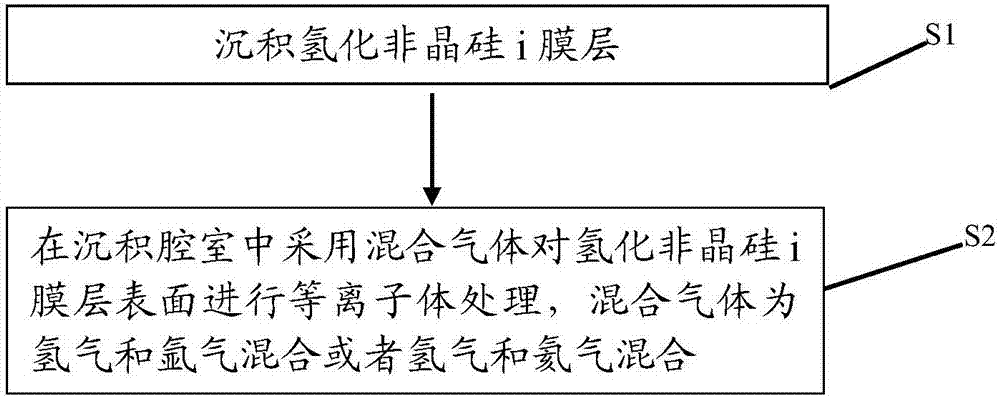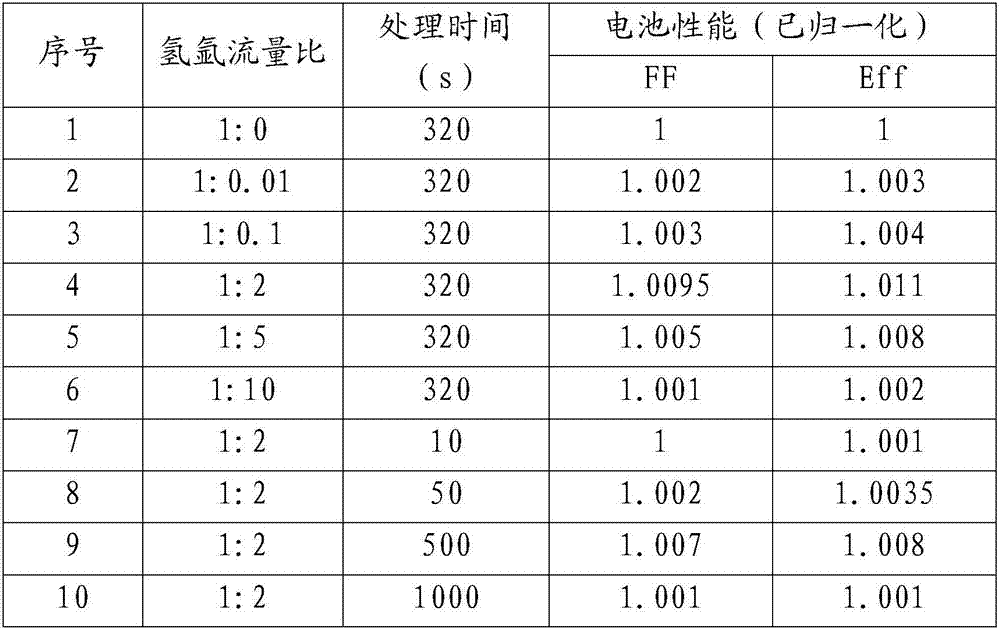Solar cell and hydrogenated amorphous silicon i membrane surface processing method thereof
A technology for hydrogenating amorphous silicon and solar cells, which is applied in circuits, photovoltaic power generation, electrical components, etc., can solve the problems of reducing interface recombination, affecting battery performance, and low hydrogen plasma energy, so as to reduce interface recombination and improve battery performance. Performance, the effect of improving interface performance
- Summary
- Abstract
- Description
- Claims
- Application Information
AI Technical Summary
Problems solved by technology
Method used
Image
Examples
Embodiment 2
[0034] Embodiment 2 of the present invention: a method for treating the surface of a hydrogenated amorphous silicon i-film layer of a silicon heterojunction solar cell, comprising:
[0035] Deposit hydrogenated amorphous silicon i-film layer;
[0036] Using hydrogen gas in the deposition chamber to perform plasma treatment on the surface of the hydrogenated amorphous silicon i-film layer;
[0037] The surface of the hydrogenated amorphous silicon i-film layer is treated with plasma again by using the mixed gas of hydrogen and argon.
[0038]Table 2 lists the battery performance data of the solar cells obtained after being treated by the method of this embodiment. Battery performance is mainly represented by two data: 1.Eff: efficiency, the conversion efficiency of the battery; 2.FF: fill factor, the fill factor of the battery, and the battery performance data has been normalized.
[0039]
[0040] Table 2 Battery performance after hydrogen plasma treatment and hydrogen-ar...
PUM
 Login to View More
Login to View More Abstract
Description
Claims
Application Information
 Login to View More
Login to View More - R&D
- Intellectual Property
- Life Sciences
- Materials
- Tech Scout
- Unparalleled Data Quality
- Higher Quality Content
- 60% Fewer Hallucinations
Browse by: Latest US Patents, China's latest patents, Technical Efficacy Thesaurus, Application Domain, Technology Topic, Popular Technical Reports.
© 2025 PatSnap. All rights reserved.Legal|Privacy policy|Modern Slavery Act Transparency Statement|Sitemap|About US| Contact US: help@patsnap.com



